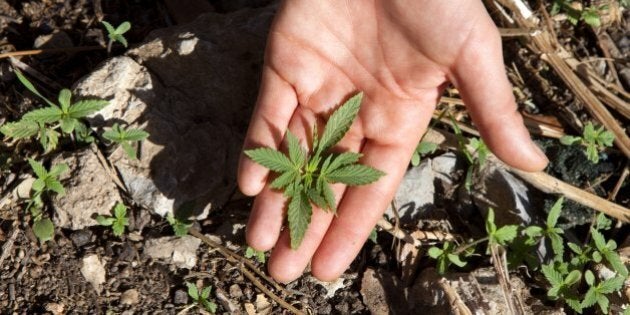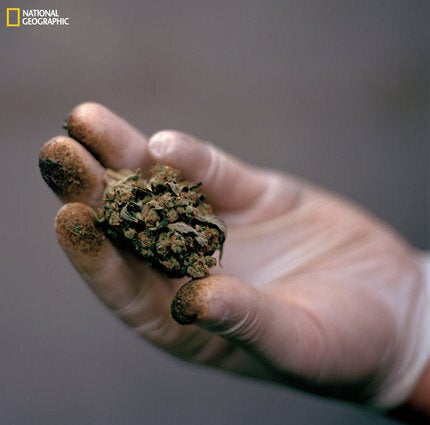
Investors jumping in during the Canadian cannabis industry's early days may find themselves wishing they'd waited a bit, as the current model for building a domestic industry is not sustainable. The same is true for U.S. operations.
While likely unpopular, I issue this caution because the current approach to cannabis cultivation in Canada -- and most U.S. states, for that matter -- is based on a narrowly limited, unrealistic view of global realities, not the least of which are the inherently challenging aspects of growing in northern climates, the cost to the environment of fighting Mother Nature and the burgeoning international demand for cannabis.
Canada's medical -- and soon-to-be recreational -- cannabis industry is based on cultivation in expensively constructed secure indoor environments, with artificially created environmental conditions and a sterile environment supposedly necessary to yield a final product that is of acceptably high quality. Yet as renowned growing gurus like Ed Rosenthal and Jorge Cervantes argue, while sterile conditions are needed for cloning or tissue culture labs, cannabis grows perfectly well or even better outdoors, in its natural environment.
The environmental and economic bottom line is that the current unnatural, environmentally unfriendly, high-cost producers are unlikely to succeed.
When it comes to cultivating cannabis for the blossoming global market, what's the real cost to growing in climate-controlled warehouses and hermetically sealed bunkers? That question is immediately answered by the frequent, alarming news stories reporting its increasing strain on both the electric grid and public water supplies in places that have seen an explosion of grow operations, like Canada, California and Colorado, not to mention the environmental degradation caused by irresponsible, secretive growers dumping pesticides and trash into soil and water while decimating natural vegetation and wildlife habitats.
In a world committed to lowering our carbon footprint, the environmental and economic bottom line is that the current unnatural, environmentally unfriendly, high-cost producers are unlikely to succeed. This is the challenge of the Canadian/U.S. marketplace.
There is a logical alternative, and right now, with the industry still in its infancy, is the time for an immediate (and relatively simple) course correction. After all, we've got this figured out when it comes to avocados, oranges or jicama. Local groceries are not supplied with warm-weather produce by warehouse operations in cold climates at outrageously expensive prices. On the contrary, naturally grown produce is simply and logically imported from suitable regions at much lower cost, in much the same way as Canada exports wheat and maple syrup to those countries whose environments don't support local production.
Likewise, the cannabis industry can be similarly structured now while it's easy to do and before a change of course would create extensive negative economic considerations. Not only would importing cannabis grown in open-air greenhouses in climate-appropriate regions end current environmentally damaging practices, it would create a net positive environmental effect, by offering carbon sequestration.
The end-product cost to consumers would drop even after governments add their taxes, because the cost of cultivation is pennies on the dollar when done in a natural setting. The opportunity is at hand for the world market to be supplied with low-cost cannabis grown and harvested in a natural environment with existing labor and infrastructure and a net positive environmental effect.
Currently, countries located on or near the equator, including Colombia and Ecuador, dominate much of North America's cut flower industry due in large part to their year-round, 12-hours-light/12-hours-dark cycle providing a Mother Nature-approved environment for flower growth without straining the electric grid, and where consistent rainfall eliminates the need to drain local public supplies. In these countries, much of the population is employed in the cut-flower industry -- industrious, highly skilled workers who can easily shift from one kind of flowers to this higher-value crop on a world scale.
While free-market dynamics will inevitably assert themselves eventually over the current industry structure, international organizations and governments, rather than supporting protectionist policies, should be seizing the opportunity to structure this new industry on a global scale. In so doing they'll also seize the opportunity to cost-effectively eradicate the destructive black market, a topic unto itself, which I'll be addressing in an upcoming column.
The reality is, the world we live in is truly a global one, and environmentally harmful, protectionist policies no longer make sense.
We have a chance here to get it right from the starting gate, and we owe it to ourselves to do that.
Follow HuffPost Canada Blogs on Facebook
MORE ON HUFFPOST:
